"President
Garcia"
refloated from Guernsey coast
![]()
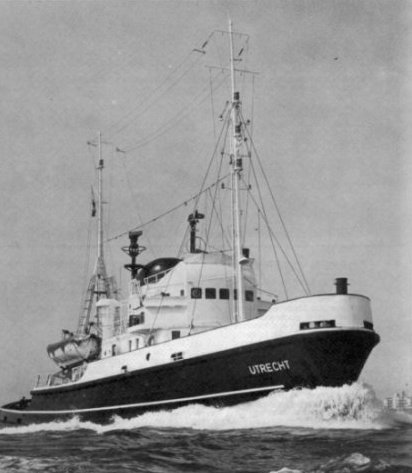
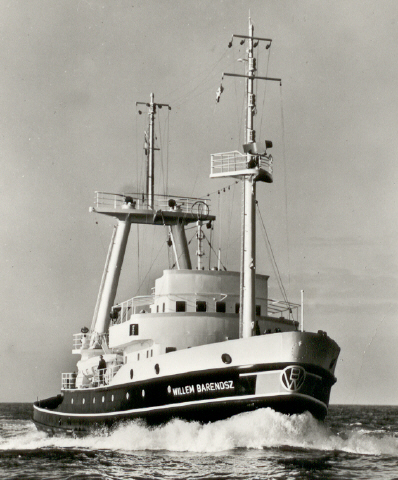
The hazardous, rock-strewn coast of Saints
Bay in the southern part of the island of Guernsey was a scene of intense and unsusual
activity during the month of July, 1967. Three of our tugs, a large salvage team and three
chartered coasters assembled there. Their task was to refloat the 10,826 g.r.t. Philippine
President Lines cargo vessel President Garcia, which struck the rocks at 12 knots
on the night of 13th when en route for Rotterdam with a cargo of copra.
The tug Utrecht was directed to the spot from her salvage station at Land's End
and was joined by the Willem Barendsz which was on salvage station in the English
Channel at the time. Both arrived on Friday the 14th and offered their services on the
basis of Lloyd's Open Form ("no cure, no pay"). The offer was accepted and by
the afternoon the tugs had made fast to the vessel. The initial attempt to refloat her
failed. Even at high water, she proved to beneaped - she was two feet out of her draft. It
was decided to discharge part of the cargo of copra from the forward holds, or to transfer
it to the stern part.
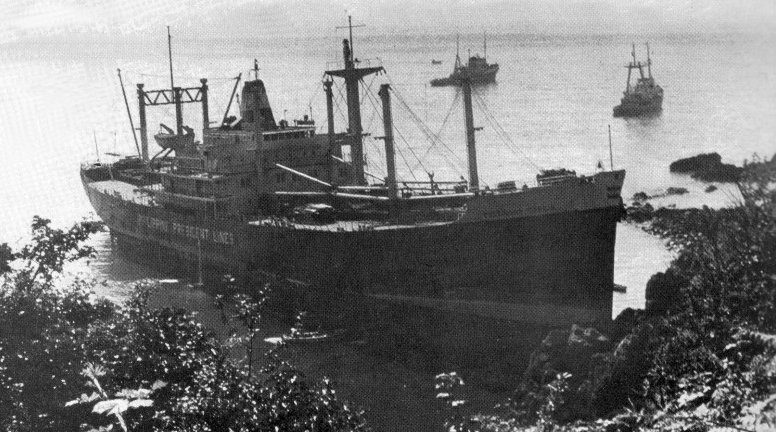
Top:July 14th, 1967. The President Garcia hard
aground in Saints Bay, Guernsey,
the tugs Utrecht and Willem Barendsz lie at anchor in the bay
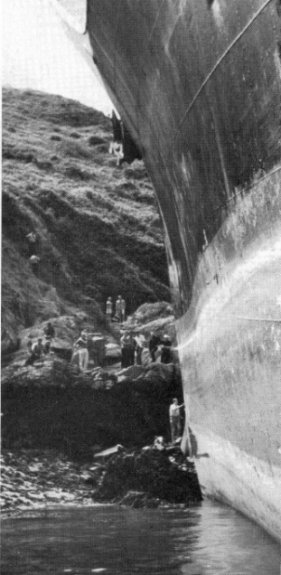
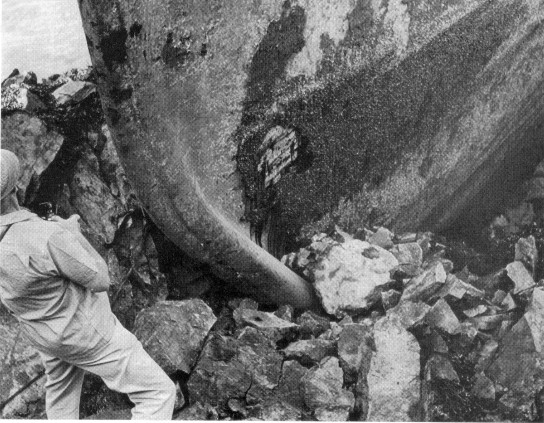
Top left: The stranded vessel towers above the rocks, right:
the twisted stern of the President Garcia
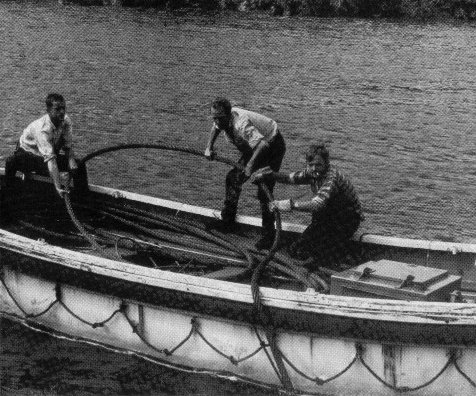
Top and below: The motor boat crosses the gap carrying a
line
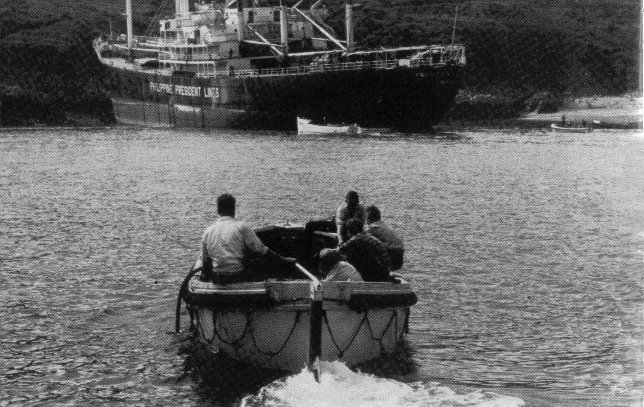
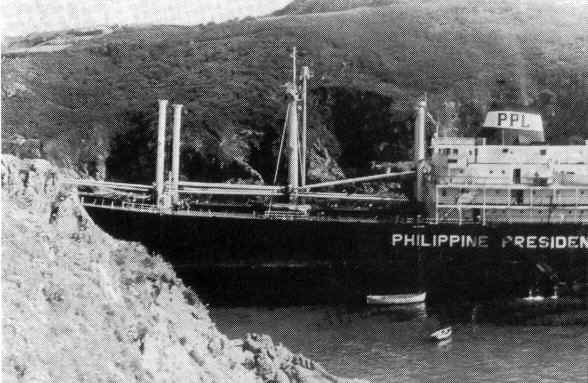
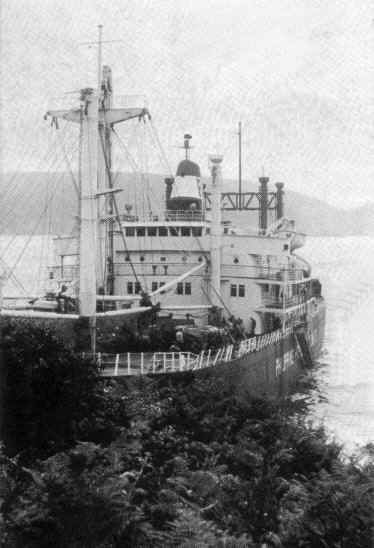
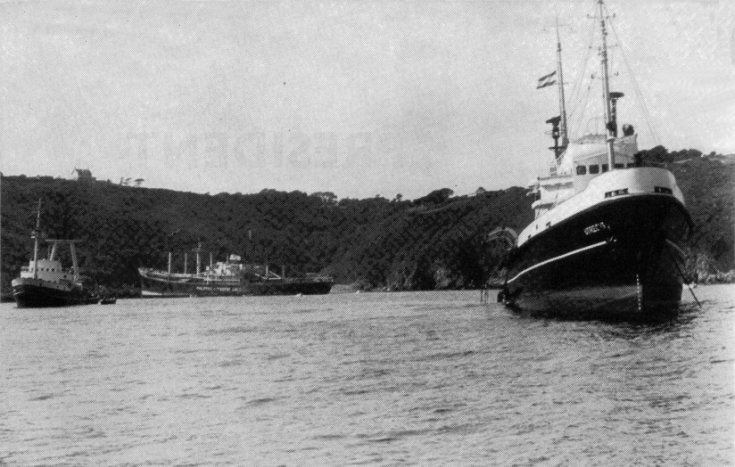
Both Willem Barendsz and Utrecht has
lowered the motor boats to make connection
between the tugs and the President Garcia
On the instructions of the Master, Captain Frederico Guererrez, the entire crew, numbering64, had remained on board, and they joined with islanders and tourists in watching the operations. Tension rose when, at low tide on the morning of the 15th, the deck and side plating in the vicinity of No.2 hold commenced to buckle. Inspection by divers showed that one deeptank and several double bottom tanks had been damaged. Frogmen succeeded in plugging the holes in the double bottom beneath No.2 hold. The sounding pipes could not be used owing to damage or other causes, and so our men had to go down via the forward pipetunnel into the bottom to drill holes in the watertight bulkheads of No.1 hold and No.1 deeptank to ascertain whether water had penetrated the hold. "A unique experience, particularly when the ship is moving about on the rocks," said salvage inspector H. Bijlsma. "But it showed exactly what the underwater damage was."...... (continued next page)
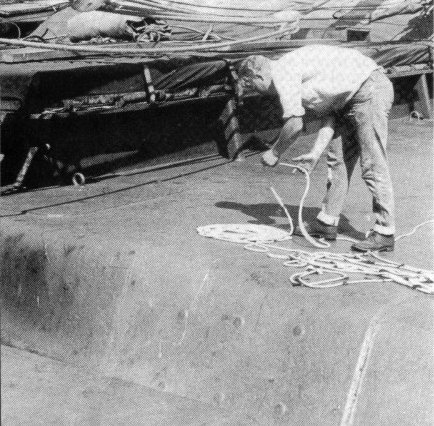
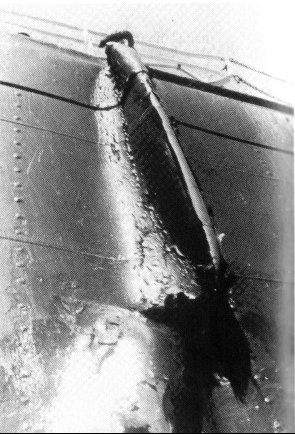
Tension rose when, at low tide on the morning of the 15th,
the deck and side
plating in the vicinity of No.2 hold commenced to buckle.